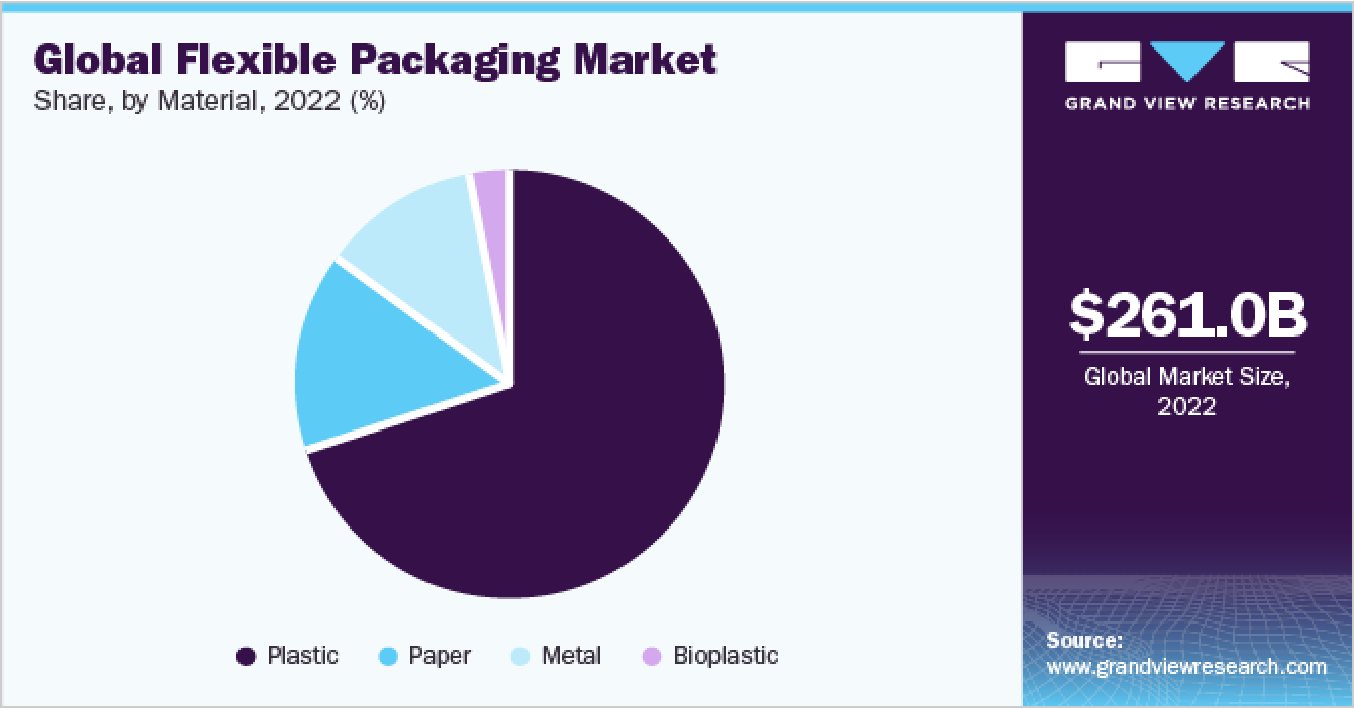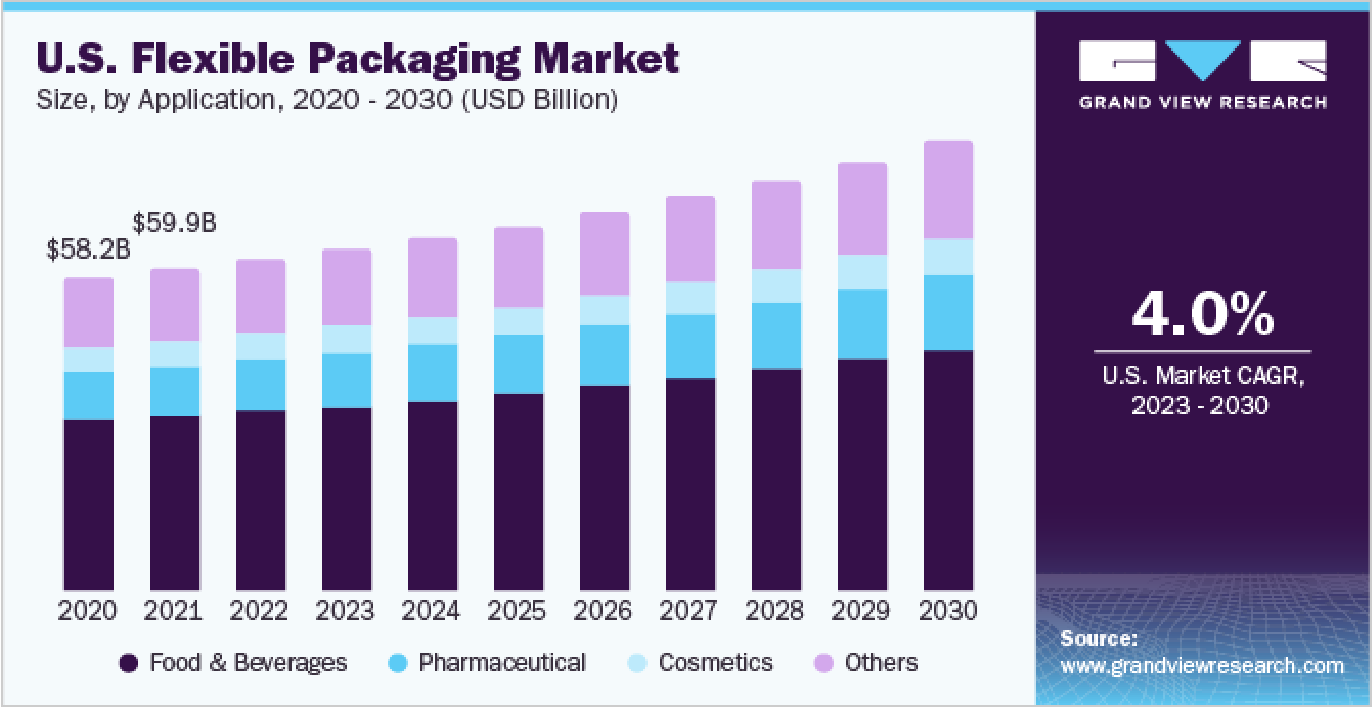Embracing the Future of Flexible Packaging: Innovation, Sustainability, and Global Growth
Flexible packaging has transformed how we package our goods by its versatility, convenience, and sustainability. The flexible packaging industry has boomed over the last few decades due to its innovative solutions and sustainable impact. Read more to find out what the future of flexible packaging will look like and how its overall production will increase worldwide.
First, What is Flexible Packaging?
Flexible packaging is a non-rigid means of packaging goods and products. The package’s shape can change and mold to its holding product during use. Flexible packaging comes in various shapes and sizes, including bags, pouches, liners, wraps, roll stock, and other flexible products. It can be produced from paper, plastic, film, aluminum foil, or any combination. Industries that require versatile packaging, especially the food and beverage industry, utilize this type of packaging.
Think about your local grocery store. Potato chip bags, resealable stand-up granola snack pouches, and vacuumed sealed meat packages are all examples of flexible packaging. The food industry loves to use flexible packaging since it is easy to store, carry, open, and reseal and extends product shelf life.
The Global Market
According to a report by Grand View Research, a leading market research firm, the global flexible packaging market was valued at USD 261.04 billion in 2022 and is expected to grow at a compound annual growth rate of 4.7% from 2023 to 2030. Asia Pacific countries accounted for the largest revenue share of over 38% in 2022, thus dominating the flexible packaging industry. China and India are expected to further grow due to their growing e-commerce and high availability of raw materials. Flexible packaging is also likely to increase in North America and Europe due to consumer preference for convenient consumption. (Source: https://www.grandviewresearch.com/industry-analysis/global-flexible-packaging-market) The “Global Trends in Flexible Packaging” report from PerfectPackaging.org claims that about 90% of all food and beverage packaging utilizes flexible packaging worldwide. And that flexible packaging currently accounts for 39% of all global packaging. Thus, the total global packaging market is $1 trillion annually. (Source: https://perfectpackaging.org/what-is-flexible-packaging-page/)


Consumer-Driven Sustainability
Flexible packaging has increased in popularity due to its cost-effectiveness and high efficiency. Flexible packaging is a sustainable solution since it uses less material, water, and energy during manufacturing than other types of packaging. The change in consumer lifestyles is another reason the flexible packaging industry has grown. Customers value convenience and sustainable options and are willing to pay more for packaging with better functions and qualities. Most times, flexible packaging has a larger surface for graphic marketing utilization, so when customers make fast purchasing decisions in grocery stores, they are more likely to buy a product with flexible packaging. Flexible packaging’s lightweight, cost-effectiveness, non-fragile nature, and sustainability are all great attributes consumers worldwide continue to love and value.
In conclusion, flexible packaging has revolutionized how we package and consume goods, and we can expect this innovative and sustainable solution to continue growing in the decades to come. The future of packaging is flexible, and it’s a journey worth watching as we embrace a sustainable and consumer-driven approach to packaging solutions.
Don’t miss out on the latest updates, success stories, and industry news! Subscribe below to the AV Flexologic newsletter and stay informed about our innovative solutions and cutting-edge technologies.
